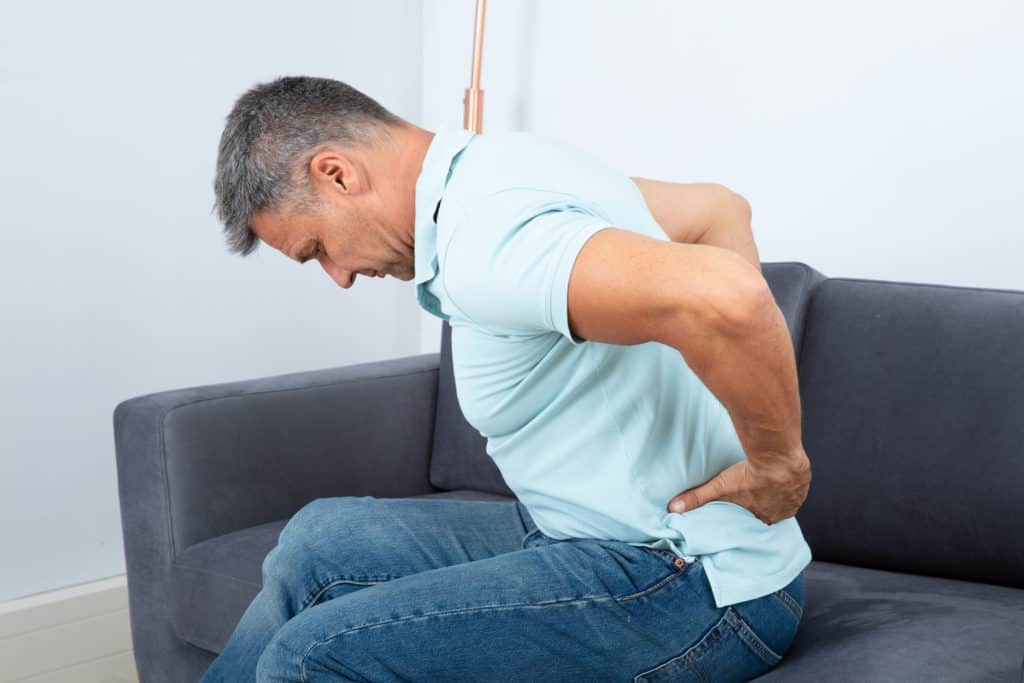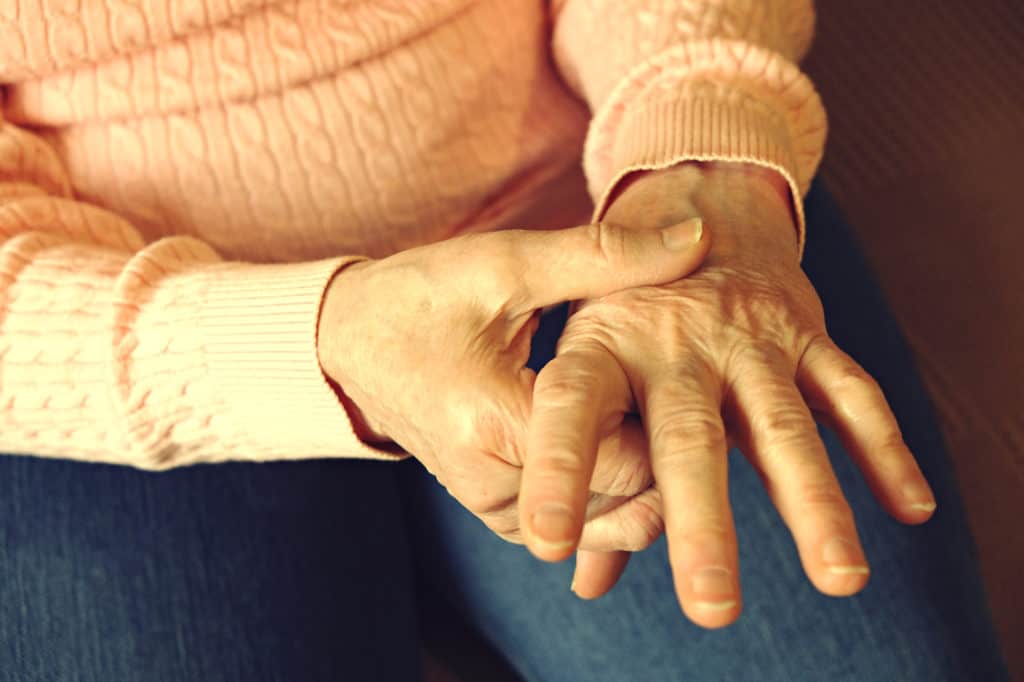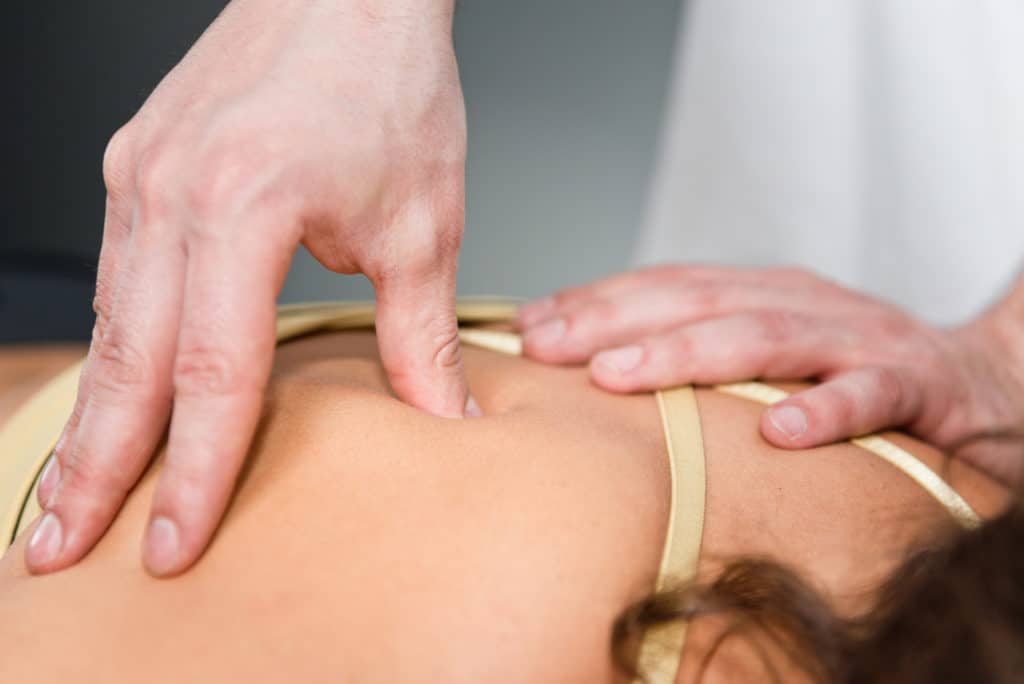
More than half the population of seniors in the US endure some sort of chronic pain. Isn’t that a depressing statistic?
But an even more somber statistic is that chronic pain is a good predictor of early death.
Some statistics even state that if you have severe chronic pain, you have an increased chance of dying in the next decade. Yes, really. And none of us want that, do we?
So, what can you do about it?
As time goes on, different parts of the body begin to suffer from wear and tear, and the likelihood of injuries increases.
Two of the most common pain types are lower back and joint pain. These could be due to rheumatoid arthritis, osteoarthritis, or even an old injury. Another concern is fractures and falls.
We know that growing older makes it more challenging to remain mobile and raises the risk of falling.
The bones also lose density when we age and become brittle, making them more likely to break or fracture.
But bones are not the only factor in age-related pain. Without early intervention to look after your “fascia” (your connective tissue), the stress and strain our bodies endure over a lifetime becomes more evident.
Restrictions and rigidity form around old injuries and scar tissue. Muscles seize up and become stiff and sore. Your joints pop and crack.
Does that sound like you?
Sadly, as a society, we've come to expect that after a "certain age," debilitating joint, back, and hip pain and other aches and pains are normal.
But the good news is that they’re not. Because by taking a whole-body approach, understanding why these things happen in the first place, and taking steps to unwind the damage with myofascial release therapy, we can keep you “loose” long into retirement.
Myofascial release therapy can help you beat age-related pain without resorting to the standard treatments offered by western medicine that come with a whole host of side effects, such as muscle relaxants, Botox or steroid injections, or worse still: surgery.
More Blogs From Release Works
How Breast Augmentation Scars Can Cause Pain and Problems, Both Now And Later
Can I Avoid Getting Scar Tissue After Surgery?
What Is a Fascial Plane, And Why Should I Know About It?
What Causes Age-Related Aches And Pains?

Movement and staying active are key factors in human evolution and longevity. While many of us lead “busy” lifestyles, unfortunately, they’re also primarily sedentary and inactive.
Our minds are busy, but our bodies barely move.
This lack of movement, over time, creates issues with our joints, muscles, and connective tissues.
Gradually, these issues lead to back, hip, neck, and joint conditions, among several other health complaints and emotional distress.
It's a vicious circle because a sedentary lifestyle contributes to and worsens chronic pain.
But if you have old injuries, muscle stiffness or soreness, and/or arthritis, it can restrict your activity levels even further because you’re reluctant to attempt even gentle exercise because you fear that you will make things worse.
This fear feeds into the cycle of less activity/movement > weaker muscles > more pain, and so it continues…
How To Prevent Age-Related Aches And Pains

There are some easy “wins” you can do at home to ease and prevent chronic pain when exercising is difficult, such as:
You can also take a holistic approach to overcoming the pain – remembering that the mind and a healthy body work together and vice versa, by making alternations in other areas of your lifestyle too, like:
Eating anti-inflammatory foods:
Not many people know that the food we consume can directly impact the pain we experience. Processed meat of any kind, sugar, and refined carbohydrates are leading causes of inflammation in the human body.
You may also react to common allergens like gluten, dairy, and soy. If you want your body to begin to heal from the inside first, an anti-inflammatory diet can help reduce inflammation and relieve pain.
Some of the things to include in your daily diet are:

All of these foods don’t just assist in reducing inflammation and relieving pain. They are also excellent for weight management and healthy digestion and for the heart, blood, and oxygen circulation.
Try to reduce stress & anxiety: Anxiety, coupled with stress and negativity, will lead to depression, heightening the body's sensitivity to pain.
So the best option for pain is to try and avoid the build-up of stress & anxiety in the first place by taking up activities that destress and build mental positivity.
You should find activities that work for you personally, but some of the things worth considering are:
Consider becoming part of a group:
If you are living with chronic pain, consider becoming part of a group of people who are going through the same experience. Sharing your concerns and feelings with someone in a similar situation makes it easier to deal with your own situation.
Look for a support group in your neighborhood. Exchanging opinions can help to learn from other people’s experiences and reduce the feeling of loneliness.
If your chronic pain has led to depression, social connection and connecting with others going through the same thing can be helpful.
Groups can be helpful, but it’s important to keep in mind that this should only be a temporary measure, your pain isn’t permanent.
Try alternative therapies:
If you have lived with persistent pain for a long time, it's easy to feel disheartened. Believing that there is no solution to your condition.
However, there are ways to manage the pain. While modern allopathic doctors tend to be dismissive of alternative treatments, many treatments are proven to be very effective in pain management for various medical conditions.
While we cannot avoid aging, and pain indeed becomes increasingly common with age, you can manage and reduce the severity or prevent it altogether with myofascial release therapy.
What Is Myofascial Release Therapy And How Does It Reduce Age-Related Pain?

Myofascial release therapy is a whole-body hands-on therapy that we use to “release” the restrictions in your connective tissue that cause chronic pain and rigidity as we age.
Myofascial release therapy differs from traditional ideas of pain rehabilitation because instead of working on a reductionist theory that individual body parts act (or cause) pain in isolation, separate from the rest of the body.
Instead, we look at and treat the body as a whole, which is considerably more effective.
During an MFR session, we examine your body to find the “parts” that don’t move quite as they should and that are causing you pain – using them as clues to the original injury or the root cause of your pain.
Because most likely, where you feel the pain and stiffness, the trigger point, is not the source or root cause of your pain. It's just how your body expresses that something wrong requires attention.
The underlying issue, or root cause, could be abnormalities or misalignment in your posture – such as a twisted pelvis or propensity to lean to one side, chronic strain and muscle weakness, a past surgery, trauma, or many other factors.
When we apply gentle pressure and a stretching motion to these restrictions in your fascia, they gradually begin to relax and rehydrate and "loosen" – even after many months, years, or decades of chronic stress and tension.
When this happens, it greatly reduces pain and stiffness, increases blood flow and oxygen to the area, and allows your body to heal fully.
With regular sessions, myofascial release therapy can help resolve long-standing pain and stiffness that we mistakenly attribute to age.
But it can also be a good proactive strategy to prevent age-related degeneration and/or the progression of arthritis.
So, if you would like to learn more about how to start that process, increase your longevity and feel better than you have in years, why not book a Discovery Visit at our Salt Lake City clinic?
Your mind and body will thank you for it.
Reserve your free spot now.

